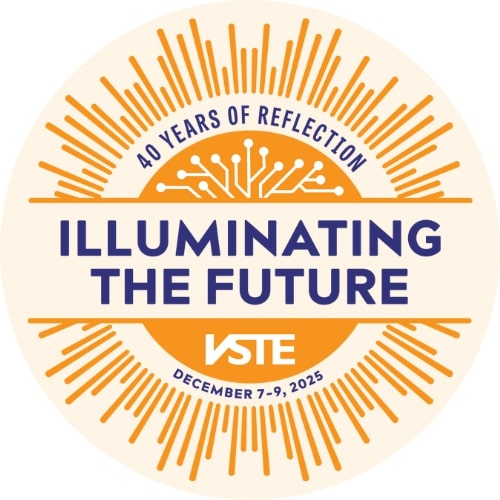Written by VSTE Board Member & UnisonEDU founder, Patrick Hausammann. Connect with him at @PHausEDU.com on Bluesky & @PHausEDU on X.
Few things in life can affect or move us more than a great story. The story keeps us held in suspense or riveted in anticipation as we listen or read the events unfolding. When a story is a great one, the pages seem to fly by as you consume the literary genius as quickly as you can, placing yourself in the story as you go. By the end, you’ve lived the events with the character, you’ve felt all the possible feelings, and you’ve reached the resolution. Even if you wished the ending to be different, you’ve loved, felt, and experienced the story.
Now picture the same story but as you read it you’re filled with a sense of loss, disconnection, and even anger. The story still flows well and you can easily tell it’s well crafted, however, you know quickly it’s not by someone you like or that thought of you. You’re unable to place yourself in the story but you keep going in hopes you’re included, perhaps just on the next page or coming spoken word. Alas, you arrive at the end just as frustrated as you were towards the beginning. You’ve not lived events through the characters nor have you felt anything but the negative feelings that arose early on. You hope the memory of the story will soon fade but know it will likely stay around a while due to the strength of emotion you feel.
Such polar opposite reactions are present every single day in classrooms, workplaces, and even homes around the world. There are many elements of equity and inclusivity that contribute to the stark contrast of the two experiences. Some of these include bias, racism, prejudice, homophobia, sexism, genderism, ableism, and ageism. In a story, elements of these can be found in numerous parts from an author, however, one of the most prominent is often the language used.
Hopefully, one big question you have at this point in the post is, what can I do to be more inclusive and not alienate anyone that reads or hears my stories, writing, etc.? Below are the first two steps I would recommend to begin your journey. It is my sincere hope that they continue a wave of progress that can be seen in numerous large technology companies and beyond. They should also help in expanding your reading and social networks further allowing you to continue your journey past this entry level.
- Educated Commitment
- Don’t try to be more inclusive in your language without also learning more and examining your own biases and past interactions. There are few things worse than performative measures taken to mask a true self that will undoubtedly surface and carve a swath of loss, disconnection, and anger in many readers while fueling the perpetuation of negative biases in others. A false facade will be uncovered by those it will hurt the most. Think and learn first. Apologize for the past wherever hurt has been caused. Follow the great Maya Angelou’s model, “I did then what I knew how to do. Now that I know better, I do better.” Ken Shelton (https://kennethshelton.net/) in collaboration with Microsoft created an online learning pathway, “Anti-racism journey for educators with students,” that would be a great place to start your journey. It can be accessed here: https://education.microsoft.com/en-us/learningPath/8ec7f261
- Role Specific Research
- Now that you’ve started with learning more through beginning (or continuing) your “anti-racism journey” or a like inclusivity resource based on your introspection, continue on to learning more about inclusive language within your role and put them into regular practice. For example, the below resources are from my personal research on becoming more inclusive in my language within the world of technology (though many go beyond this scope).
- https://medium.com/pm101/inclusive-language-guide-for-tech-companies-and-startups-f5b254d4a5b7
- https://www.aswf.io/blog/inclusive-language/
- https://buffer.com/resources/inclusive-language-tech/
- https://developers.google.com/style/inclusive-documentation
- https://joinhandshake.com/blog/employers/70-inclusive-language-principles-that-will-make-you-a-more-successful-recruiter/
- https://nvlpubs.nist.gov/nistpubs/ir/2021/NIST.IR.8366.pdf
- https://apastyle.apa.org/style-grammar-guidelines/bias-free-language
Now that you’ve begun your journey to being more inclusive in your language and have committed to ongoing education and growth, be sure to share as you progress. Your share may just be the words another needs to read or hear to start their journey. Be an active ally and upstander calling out and educating those that practice exclusion, racism, and more when you recognize it. Together we can make a true difference and progress towards a world where everyone can live the events with the character representative of themselves and feel all the possible feelings from the story and not the exclusion they embody.
Bonus Resource: Anti-Racist Language Guide from the University of Arizona





